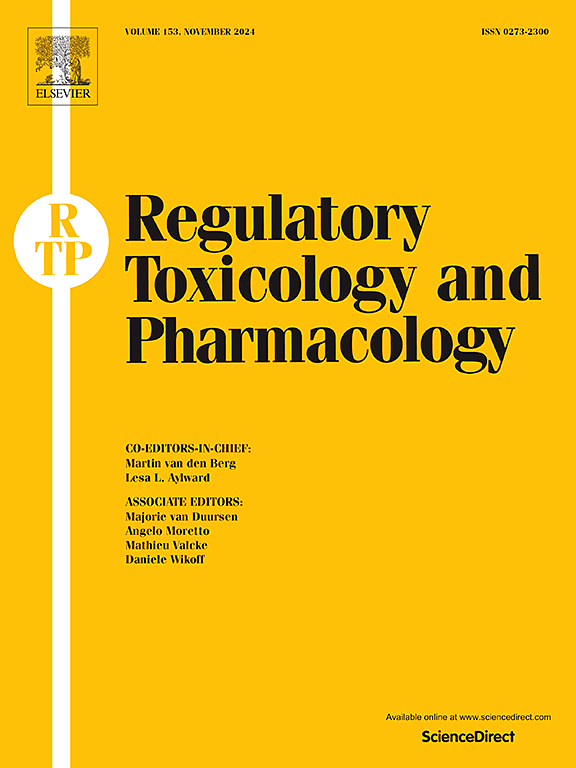从经验中学习:REACH法规下表面活性剂解读策略的回顾性分析
IF 3.5
4区 医学
Q1 MEDICINE, LEGAL
引用次数: 0
摘要
跨读是一种广泛使用的适应,以满足REACH下的信息要求。然而,从ECHA的角度来看,在2010年和2013年截止日期前提交的注册人往往未能满足监管要求。由于其复杂的组成和独特的物理化学性质,表面活性剂在这方面提出了重大挑战。为了改进未来的提交和防止不必要的动物实验,深入分析了72个ECHA关于24个主要表面活性剂基团的合规性检查和测试建议评估的最终决定的跨读相关讨论,并确定了接受或拒绝的原因。监管接受/拒绝的关键驱动因素是成分信息的存在或缺乏,对结构相似性的考虑以及桥接研究的可用性和性质。确定了几个元素,可以在未来的REACH档案中轻松改进,而无需额外的动物试验。其他病例显示了ECHA期望的不确定性,突出了在档案准备过程中改进沟通的必要性。值得注意的是,在本分析中没有发现接受基于非动物的新方法方法(NAMs)的跨读的例子。由于非动物名称可能作为支持信息提供的好处,鼓励所有利益相关者为增加监管接受度做出贡献。本文章由计算机程序翻译,如有差异,请以英文原文为准。
Learning from experience: A retrospective analysis of read-across strategies for surfactants under REACH
Read-across is a widely used adaptation to address information requirements under REACH. However, registrants submitting for the 2010 and 2013 deadline have often failed to satisfy regulatory requirements from ECHA's point of view. Due to their complex composition and unique physicochemical properties, surfactants are posing major challenges in this respect.
With the aim to improve future submissions and prevent unnecessary animal testing, read-across-related discussions of 72 ECHA Final Decisions on Compliance Checks and Testing Proposal Evaluations of 24 major surfactant groups were analysed in-depth, and causes for acceptance or rejection were identified.
Key drivers of regulatory acceptance/rejection were presence or absence of composition information, considerations on structural similarity as well as availability and nature of bridging studies.
Several elements were identified that may be easily improved in future REACH dossiers without the need for additional animal testing. Other cases revealed uncertainty of expectations by ECHA, highlighting the need for improved communication during the dossier preparation.
Notably, no example for acceptance of read-across based on non-animal New Approach Methodologies (NAMs) was identified in this analysis. Owing to the benefits that non-animal NAMs may present as supporting information, all stakeholders are encouraged to contribute to an increase of regulatory acceptance.
求助全文
通过发布文献求助,成功后即可免费获取论文全文。
去求助
来源期刊
CiteScore
6.70
自引率
8.80%
发文量
147
审稿时长
58 days
期刊介绍:
Regulatory Toxicology and Pharmacology publishes peer reviewed articles that involve the generation, evaluation, and interpretation of experimental animal and human data that are of direct importance and relevance for regulatory authorities with respect to toxicological and pharmacological regulations in society. All peer-reviewed articles that are published should be devoted to improve the protection of human health and environment. Reviews and discussions are welcomed that address legal and/or regulatory decisions with respect to risk assessment and management of toxicological and pharmacological compounds on a scientific basis. It addresses an international readership of scientists, risk assessors and managers, and other professionals active in the field of human and environmental health.
Types of peer-reviewed articles published:
-Original research articles of relevance for regulatory aspects covering aspects including, but not limited to:
1.Factors influencing human sensitivity
2.Exposure science related to risk assessment
3.Alternative toxicological test methods
4.Frameworks for evaluation and integration of data in regulatory evaluations
5.Harmonization across regulatory agencies
6.Read-across methods and evaluations
-Contemporary Reviews on policy related Research issues
-Letters to the Editor
-Guest Editorials (by Invitation)

 求助内容:
求助内容: 应助结果提醒方式:
应助结果提醒方式:


